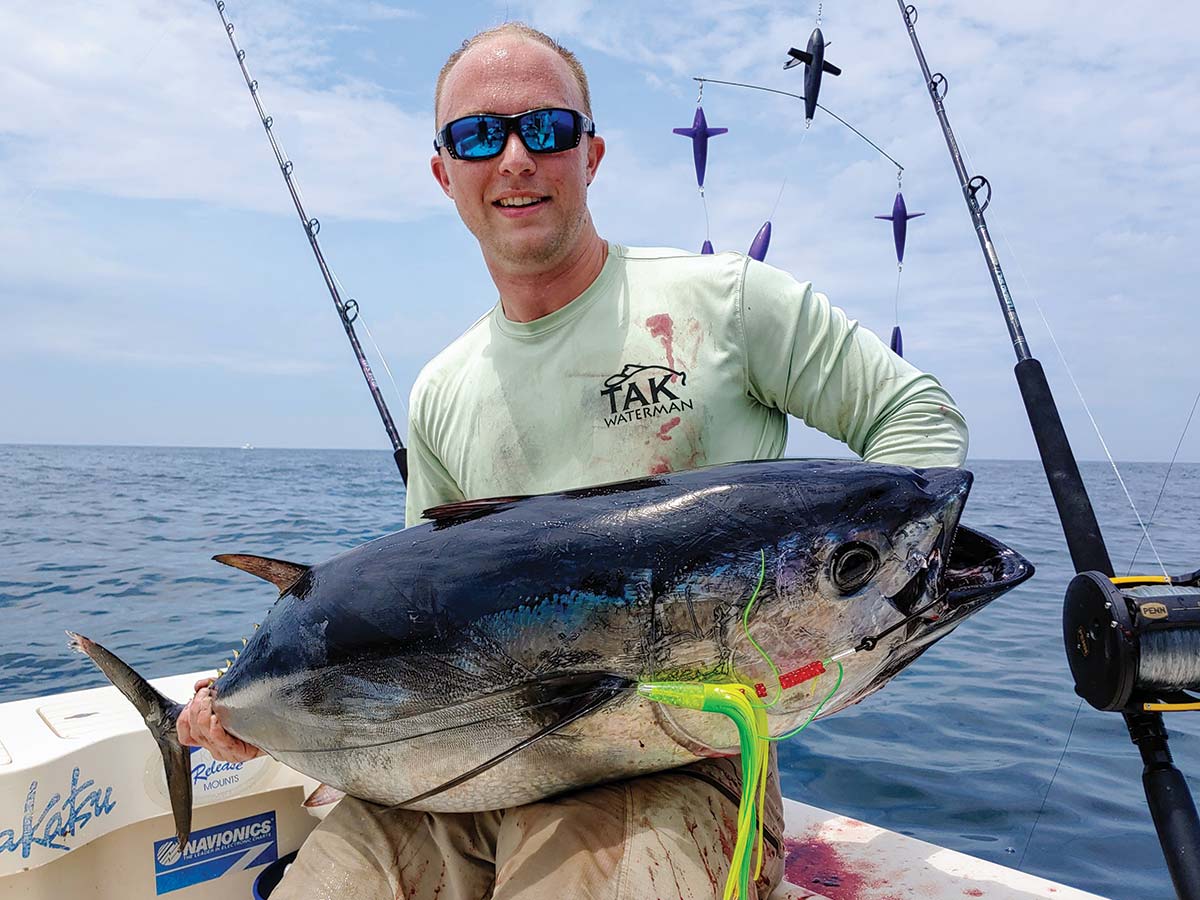
Wide and side trackers have taken the mid-range tuna trolling world by storm, here’s a 10-pack of tips and tricks to make you more successful this season.
For anyone who trolls the mid-shore grounds for bluefin or yellowfin tuna, the terms wide tracker or side tracker has become common. However, such was not the case back in 2017 when Sterling Tackle first introduced them to the offshore game for the first time. An innovative design that took a spreader bar with a bird and placed a planer or keel on the underside of the bird to make the bar plane out to the side of your normal spread, you could now work to the outside of your wake in calm water. Since then several manufacturers such as ChatterLures followed suit with modifications and their own tweak on the original design.
I am on the ChatterLures pro staff, but have also run the Sterlings, and both are excellent products. Since the inception of trackers I have done a lot of testing and experimenting to see what worked and what didn’t. Whether this is going to be your first or fifth year using side/wide trackers, I guarantee there is still something to learn; here are some of my observations and tips.
- Trackers work well because a tuna is drawn into your spread by the boat’s dark underside or shadow and your prop wash. The underside of the boat most likely resembles a tightly balled cloud of bait, and your prop wash resembles the tail end of the pod in a frenzy as prey attack it. This looks natural to a tuna. I don’t think the tuna look up and say, “Hey there’s Capt. Jim’s boat,” and up they come to investigate. Instead they investigate what looks to a feed, but if they don’t take a strike at the spread, as they slide out they run right into the side trackers. Not to make the same mistake twice and pass on another potential meal, they bite.
- When running trackers off outriggers, the smallest tracker (18-19 inches) should be run off the long rigger clip while the larger, 36-inch bar should be run off the mid-rigger clip. The larger trackers put a lot of pressure on the clip, and when run from the long rigger clip will often release.
- Trackers will run better and release much less if you are using carbon fiber outrigger poles instead of aluminum poles. The carbon fiber poles are stronger, lighter, and will not bend as much. The aluminum poles bend and can even oscillate back and forth, especially if you are plowing though some rough seas. Also, if you have to tighten your release clip down almost all the way you risk the chance of bending an aluminum pole if the clip doesn’t release immediately when a tuna hits.
- In rough water it is better to run the larger 36-inch trackers as they will not dig, flip, or get buried. The smaller 18-19 bars tend to do this. ChatterLures are self-directing however and will right themselves.
- One of the most productive color patterns to run is a purple/black tracker with a green or zucchini stinger. I don’t know why it works so well, but this color combo has accounted for many tuna for many boaters the last several years.
- Another very productive combination has been to change out the stinger with a ballyhoo on a 1-ounce Joe Shute head. This combination has worked well when the tuna are finicky not hitting the normal stinger. You can also run a Bill Hurley, Hogy, or Ron-Z behind the Joe Shute. These have also taken their share of tuna.
- By experimenting I have had great success running a pair of all-white trackers right from the rod tips off my transom, set just beyond my prop wash about ten yards back. All white is not one of your traditional colors and shows why experimenting can pay off.
- If you don’t have outriggers on your boat, trackers are ideal for you to widen your spread. Run your widest tracking bars from the rod holders off your bow, and then fill in other trackers at your mid-ship and transom.
- Make sure you wear gloves when you grab the tracker to leader it for the gaff. This protects your hands if a tuna runs and pulls away at the last minute.
- You can hang your tracker bar bags with the trackers inside over a rod holder when not in use. This keeps them off the ground and out of the way.



